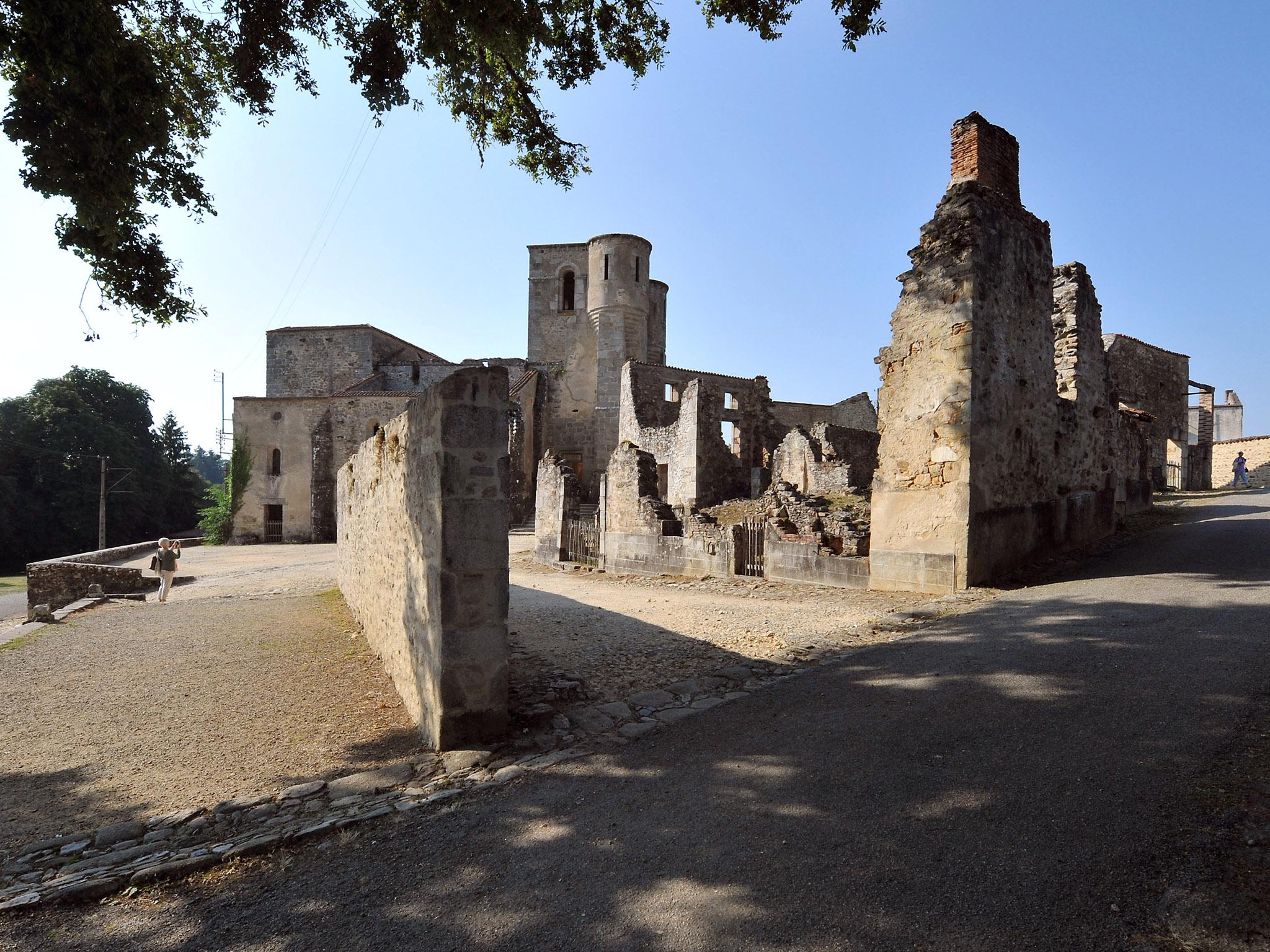Holocaust denial graffiti daubed on Nazi massacre site in France
‘Shame on those who did this. All will be done to find and judge those who committed these sacrilegious acts,’ says Justice Minister

Your support helps us to tell the story
From reproductive rights to climate change to Big Tech, The Independent is on the ground when the story is developing. Whether it's investigating the financials of Elon Musk's pro-Trump PAC or producing our latest documentary, 'The A Word', which shines a light on the American women fighting for reproductive rights, we know how important it is to parse out the facts from the messaging.
At such a critical moment in US history, we need reporters on the ground. Your donation allows us to keep sending journalists to speak to both sides of the story.
The Independent is trusted by Americans across the entire political spectrum. And unlike many other quality news outlets, we choose not to lock Americans out of our reporting and analysis with paywalls. We believe quality journalism should be available to everyone, paid for by those who can afford it.
Your support makes all the difference.Vandals daubed graffiti denying the Holocaust took place in a village where France’s largest massacre by the Nazis in World War Two happened.
The graffiti, which was discovered on the wall at the entrance to the Centre for Remembrance on Friday, has now been covered by a tarpaulin by officials in Oradour-Sur-Glane.
The word “Lie” was scrawled on the wall, along with other graffiti, according to regional newspaper Le Populaire du Centre. The inscription “Martyr Village” was crossed out.
France’s justice minister pledged on Saturday that the people who scribbled the graffiti would be brought to justice.
Eric Dupond-Moretti tweeted: “Shame on those who did this. All will be done to find and judge those who committed these sacrilegious acts.”
Interior Minister Gerald Darmanin denounced the “abject filth” in a tweet on Friday night.
Prime Minister Jean Castex said the graffiti “dirties the memory of our martyrs”.
Troops from the extreme SS “Das Reich” division were in charge of killing 642 villagers on 10 June 1944 – herding them into barns and a church and setting the town on fire.
While a new village has been built, the ruins of the old town have been left untouched as a testimony to Nazi horrors.
The massacre occurred four days after the Allied D-Day landings in Normandy.
The killings were believed to have been ordered in retaliation for the kidnapping of a German soldier by the French Resistance.
In the UK, the number of anti-semitic hate incidents recorded last year hit record levels for the fourth year in a row.
The Community Security Trust, a Jewish advisory body which revealed the high levels of antisemitic incidents earlier in the year, said there had been 1,805 incidents in 2019, which is an increase of seven per cent.
Additional reporting by Associated Press
Subscribe to Independent Premium to bookmark this article
Want to bookmark your favourite articles and stories to read or reference later? Start your Independent Premium subscription today.
Join our commenting forum
Join thought-provoking conversations, follow other Independent readers and see their replies
Comments